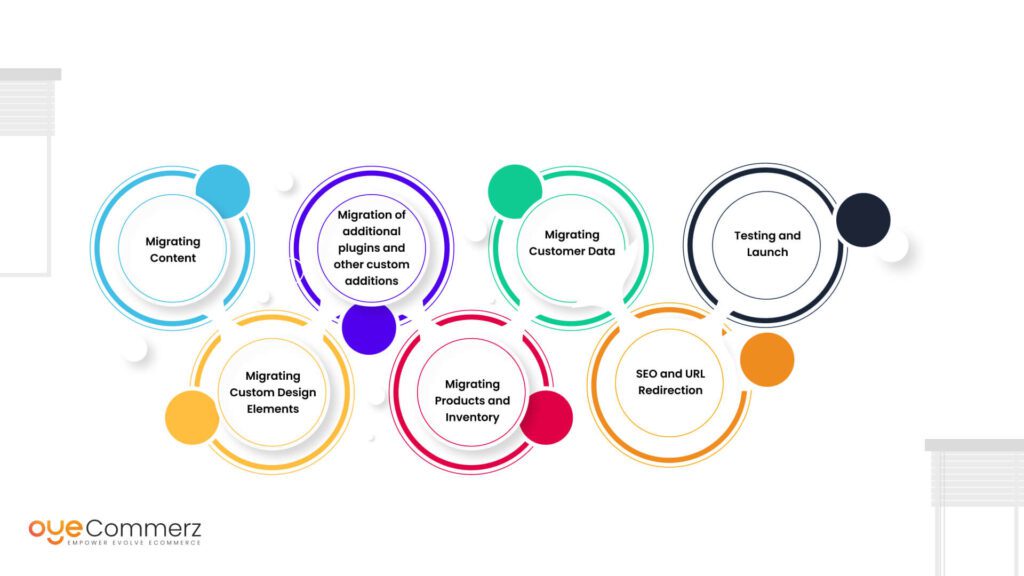Shifting from WordPress to Shopify is an promising step in optimizing your online store processes. As companies grow, choosing a solution that aligns with growth potential, user experience, and customization is essential. Shopify is widely recognized as a preferred choice for e-commerce professionals, providing superior flexibility, data protection, and ease of use. In this guide, we will delve into the transformative impact of this migration, highlight the benefits, and share actionable steps to ensure a smooth move.
1. Why Migrate from WordPress to Shopify?
The combination of WordPress and WooCommerce, continues to support countless e-commerce platforms. Nevertheless, as companies scale, issues like plugin dependency, data risks, and technical complexities can hinder progress. Shopify, designed explicitly for e-commerce, eliminates these issues with an all-in-one, intuitive solution. Statistics back this transition—Shopify hosts over 4.4 million websites worldwide, with a documented 10% boost to sales performance for many businesses post-switch.
2. Key Benefits of Shopify for E-commerce Success
Shopify’s robust ecosystem is tailored for expanding businesses. Its notable benefits are:
- Seamless Customization: Shopify offers over 80 professionally designed themes.
- Built-in Features: Capabilities such as Shopify Payments and built-in SEO streamline operations.
- International Expansion: Multi-currency support and regional customization enable brands to expand internationally.
Additionally, Shopify boasts an availability percentage of 99.98%, ensuring your website remains accessible.
3. Preparing for WP to Shopify Migration
Prior to starting the migration process, evaluate your existing setup. Review inventory details, client information, and SEO performance. Resources such as Shopify’s Migration Kit or external tools can simplify this process. Create a detailed strategy, ensuring all assets—product descriptions, media files, and blog content—are ready for seamless import.
4. The Importance of Accurate Data Migration
Data migration is a cornerstone of a smooth transition. When moving from WordPress to Shopify, prioritize:
- Inventory Details: SKU, descriptions, and categories.
- Customer Data: Emails, order history, and preferences.
- Search Engine Considerations: Retain meta tags, URLs, and forwarding paths to maintain search rankings.
Leverage tools such as LitExtension to streamline data transfer while minimizing errors.
5. Tailoring Your Shopify Store to Fit Your Brand
Post-migration, personalizing your Shopify store helps it aligns with your brand. Take advantage of Shopify’s intuitive page builder to design pages effortlessly. Shopify's themes are optimized for all devices, ensuring a smooth user experience across platforms—a critical factor, given 74% of e-commerce traffic is generated by mobile visitors.
6. Maintaining SEO During Migration
SEO is vital for preserving your online presence during migration. Shopify excels in SEO with organized link formatting, built-in optimization tools, and seamless blog integration. Ensure:
- Set up URL forwarding for existing links.
- Optimize new pages with targeted phrases.
- Leverage plugins like Plug in SEO to monitor performance after the switch.
7. Essential Tests After Migrating to Shopify
Once the migration is complete, conduct thorough testing.
Check: - Website speed (Shopify delivers faster speeds compared to WP).
- Functionality of payment gateways and checkout processes.
- Adaptability across devices.
Quality assurance guarantees your store delivers a seamless shopping journey from the start.
8. Case Study of a Successful Migration
An example of effective platform switching is Gymshark, a sportswear company that transitioned to Shopify. Post-migration, the company experienced a 60% increase in mobile sales and reduced site downtime. This highlights the potential of Shopify in driving online business success.
9. Overcoming Common Migration Issues
Migration is not without Bulk migration to Shopify obstacles, such as information accuracy and reconfiguring custom functionalities. However, Shopify’s robust support and third-party experts simplify the process. Partnering with experienced Shopify developers ensures a smooth transition.
10. Making the Switch: The First Step Toward Success
Migrating from WordPress to Shopify represents a forward-thinking decision to e-commerce. By focusing on growth, simplifying management, and enhancing the customer experience, Shopify enables companies to succeed in competitive markets.
Final Thoughts
Transitioning from WP to Shopify is a strategic move that can greatly enhance your e-commerce success. With a robust migration plan, the appropriate resources, and professional guidance, you can unlock new WordPress online store to Shopify growth opportunities.
Excited to start the journey? Let’s discuss how our Shopify migration services can revolutionize your e-commerce platform. Contact us now, or ask yourself: Can your business afford to miss out on Shopify’s growth potential?
